This article is written by Arya Senapati. It attempts to analyse the provisions of the 106th Constitutional Amendment, which dealt with reservation of women in legislative bodies and the political participation of women. This article also discusses the representation of women in politics, objections raised against passing such a reservation and the bill, and the recommendations made by the Geeta Mukherjee Committee along with the benefits of the bill. This amendment is also known as the Women’s Reservation Bill, 2023. It attempts to analyse the barriers to political participation of women and the implications of the amendment on such socio-political factors.
Table of Contents
Introduction
The first Lok Sabha formed in 1952 had 24 women Members of the Parliament, and currently, in the year 2024, the Lok Sabha comprises only 74 women Members of the Parliament. In nearly 75 years of Indian politics, the representation of women in the House of People, the legislative institution, still remains less. Even though the number of women voters who exercise their right to vote is higher as compared to male voters and will surpass the margin substantially by the next general elections, their representation in the decision-making bodies still lacks adequacy. Due to multiple social factors, norms, and stereotypes, women either lack access to the forums of politics or face systemic disabilities while participating in the process of election. Owing to such factors, the necessity for reserving seats for women in the Indian Parliament was felt.
The discourse regarding the necessity for gender-based reservation in legislative bodies finds its origin loosely in the year of 1996 when the then-Deve Gowda-led United Front government introduced the 81st Constitutional Amendment Bill, 1996 for the reservation of women in Parliament. The bill failed to gain support in the Lok Sabha. The discourse arose multiple times and many political parties sought to take credit for passing the Women’s Reservation Bill but due to debates and concerns, the bill stayed dormant. In 2021, the National Federation of Indian Women filed a PIL (Public Interest Litigation) in the Apex Court seeking the reintroduction of the bill to reserve 33% of seats for women in the Lok Sabha.
The Apex Court demanded a response from the government but did not receive any for two years and ultimately, in 2023, both houses of Parliament passed the 106th Constitutional Amendment Act, 2023 which came to be known as the Women’s Reservation Act, 2023 (hereinafter mentioned as ‘the Act’). Even though it came as a surprise after its tumultuous history, it was welcomed as a positive action aimed at improving the political participation of women and representation of women in decision-making bodies. The Act received the assent of the President on 28th September, 2023 and thereby became operational from the said date. Its implementation is yet to be determined and the nation is yet to observe the effectiveness of its provisions but initial observations suggest a balance between its promising potential and equally concerning are some of the considerations that have been ignored.
Why reserve seats for women
In the global political scenario, through thorough observation of the freedom struggles and other major political events, the role of women has been sacrosanct. One cannot ignore the reigns of powerful female leaders in various movements that bore fruitful results and brought ideal social change in world dynamics. The world as we know it today strives towards equality and equity. Equality is perceived in terms of many identities, i.e., gender, class, caste, ethnicity, religion, race, etc. Gender equality has been recognised as a pivotal necessity for creating an egalitarian society.
The Universal Declaration of Human Rights, which is regarded as the prime authority in human rights law from which other international human rights laws emerge, necessitates state action for protection of rights of women and facilitating gender equality. Especially in Article 2, it states that everyone is entitled to all rights and entitlements without any form of discrimination based on race, colour, sex, language, religion, origin, and other status. Similarly, Article 7 states that everyone is equal in the eyes of the law and is entitled to equal protection of the law without any form of discrimination. Article 21 states that everyone has the equal right to participate in governance either directly or through freely elected representatives. It also promotes the idea of universal and equal suffrage. Considering the overall implications of all these articles, it is clear that the primary source of human rights regards the necessity for a state to take appropriate actions for increasing accessibility of women in forums of political participation and lawmaking.
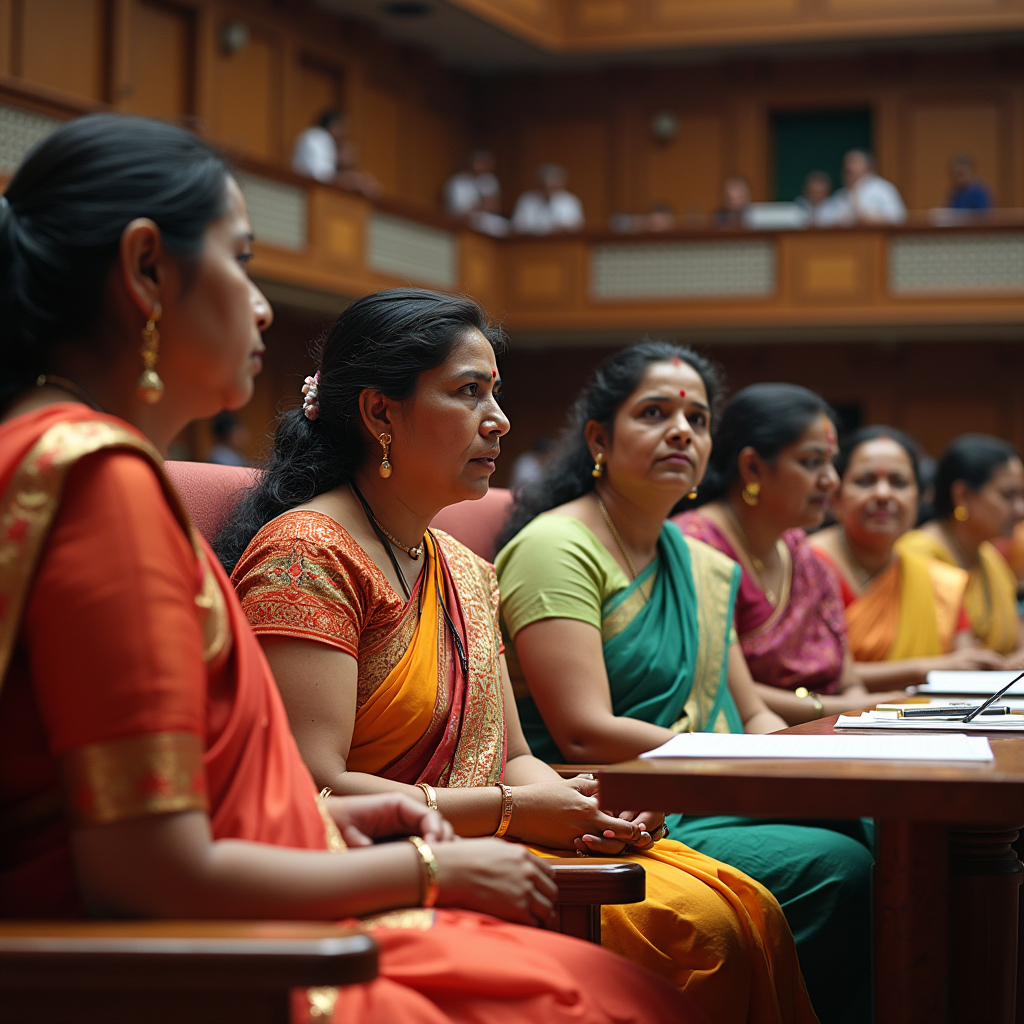
It is evident that women form almost half of the entire population of India (as per the latest census, they constitute 48% of India’s population). In an ideal democratic situation, diversity and inclusion are highly upheld. People from various backgrounds constitute a lawmaking body to allow for the free flow of diverse ideas and opinions, which ultimately reflect in the policy measures and state actions undertaken by the government. Therefore, ideally, a democracy with a 50% female population should have close to 50% female political representation to adequately address the needs and demands of women. Even though we do not live in an ideal world, one can try to reach as close to it as possible. Therefore, globally, through suffragette movements, women first demanded the right to vote, and then, through multiple waves of feminism, women demanded a seat in decision-making bodies to represent themselves efficiently.
The primary reason for having reservations for women is to ensure that the problems and concerns of almost half of the population are represented by someone who understands the concerns. It goes without saying that one cannot solve a problem completely without having faced it personally. In the Indian context, gendered issues range from bodily crimes, inequalities in education, employment and access to services, domestic violence, safety, and many others. Largely, a male dominant legislature allows for men to make laws on women’s bodies and women’s issues without having experienced it themselves. Therefore, having an adequate representation of women in policymaking and law bodies will solve the issues in a more efficient and impersonal manner. The primary role of reservation of seats for women in Parliament is equitable representation with an aim for an efficient solution.
Provisions of the Act
It is important to analyse the provisions mentioned in the law to understand its imminent effects in a clearer picture. The amendment brought about multiple changes in the Indian constitution. The provisions are:
Section 1 of 106th Amendment Act, 2023
The first section is the short title of the Act, and it states that the Act is referred to as the Constitution (One Hundred and Sixth Amendment) Act, 2023. It also states that the Act shall come into force on the date on which the Central Government notifies it through an official gazette.
Section 2 of 106th Amendment Act, 2023
The second section deals with an amendment to clause 2 of Article 239AA of the Indian Constitution. The unamended clause 2 of Article 239AA deals with special provisions regarding the Union Territory of Delhi and states that:
- As per the 69th Constitutional Amendment Act, 1991, the Union Territory of Delhi shall be referred to as the National Capital Territory of Delhi, and the administrator of Delhi appointed as per the process of Article 239 shall be referred to as the Lieutenant Governor.
- (a) The National Capital Territory of Delhi shall have a Legislative Assembly to draft laws and policies for its governance, and the body shall consist of members who are directly elected from the electoral constituencies of the territory.
(b) The total number of seats in the legislative assembly of the National Capital Territory of Delhi, the seats reserved for Scheduled Castes (SC), the division of the territory into constituencies, and other similar functional matters shall be dealt with in accordance with the laws made by the Parliament.
(c) The Articles 324 to 327 and 329 will be applicable to the National Capital Territory and the Legislative Assembly as well as the members of the assembly in so far as they apply to other states, state legislative assemblies and members of state legislative assemblies.
Now the amendment called for the insertion of subclauses ba, bb, and bc in clause 2 of Article 239AA. They are:
(ba) The Legislative Assembly of the National Capital Territory of Delhi shall reserve seats for women in the legislative body.
(bb) At least one-third of the seats that are reserved for the Scheduled Castes in the National Capital of Delhi Legislative Assembly must be reserved for women.
(bc) At least one-third of the total seats that are supposed to be filled by direct election to the legislative assembly of the National Capital of Delhi, including those seats that are reserved for women belonging to the Scheduled Caste. The form of reservation shall be determined by the Parliament.
So consequently, the effect of Section 2 of the Amendment falls largely on the Delhi Legislative Assembly, which was created by the 69th Constitutional Amendment. It simply makes it clear that the reservation for women in parliamentary bodies would also apply to the special case of the National Capital Territory of Delhi as it would to other states. There is an intersectional approach taken here by reserving seats for women belonging to Scheduled Castes too. It allows for better representation of multiple identities and social communities in lawmaking bodies. 1/3rd of the seats from the SC reservation get reserved for women, and 1/3rd of the other seats filled by direct election also get reserved for women.
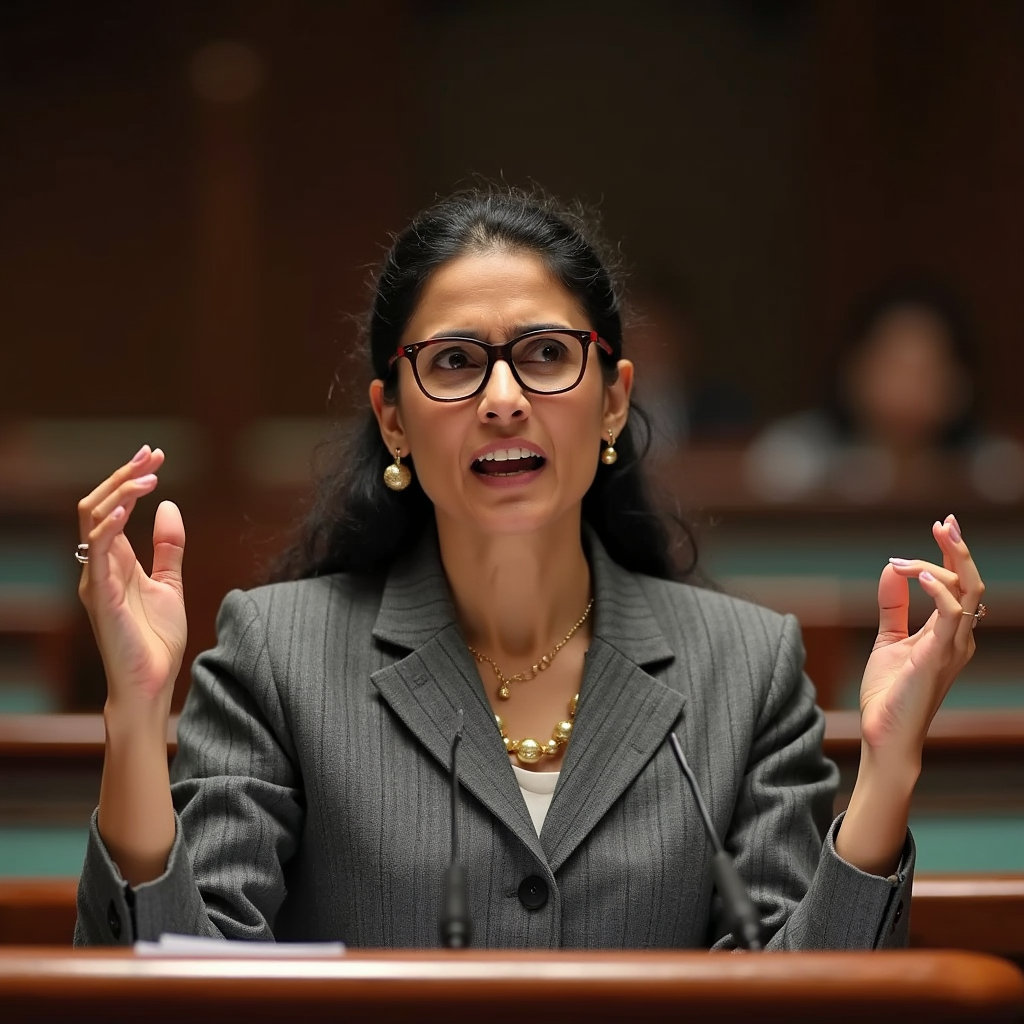
Section 3 of 106th Amendment Act, 2023
Section 3 of the Amendment Act inserted a new article into the Indian Constitution. Article 330A was inserted vide the amendment, and it stated that:
- Demands the reservation of seats for women at the House of People, i.e., Lok Sabha
- As close as possible, one-third of the seats reserved under Article 330(2) shall be reserved for women belonging to the Scheduled Caste or Scheduled Tribe.
- As close as possible practically, one-third of the seats (including the number of seats reserved for women of scheduled castes and scheduled tribes) that are filled by direct election must be reserved for women in the House of People (Lok Sabha).
This Section’s primary focus is the central legislative body, which is the Lok Sabha. It basically enacts a new provision that states that there shall be gender-based reservation of seats for women in Lok Sabha. In terms of the extent of reservation, it states that 1/3rd of the total number of seats reserved for people belonging to Scheduled Caste and Scheduled Tribe shall be reserved for women belonging to Scheduled Caste and Scheduled Tribe to facilitate an intersectional approach towards decision-making and representation.
Secondly, it states that from all the other seats which are filled by direct elections in the Lok Sabha, one-third seats, including those reserved for women belonging to Scheduled Caste and Scheduled Tribe, shall be reserved for women.
Section 4 of 106th Amendment Act, 2023
Section 4 of the amendment inserts Article 332A into the Indian Constitution. It states that:
- Demands for reservation of seats for women at State Legislative Assemblies of every state.
- Further, as far as practicable, one-third of the total number of seats that are reserved for people belonging to Scheduled Caste and Scheduled Tribe shall be reserved for women belonging to Scheduled Caste and Scheduled Tribes.
- As far as practicable, one-third seats, including those reserved for women belonging to Scheduled Caste and Scheduled Tribe, which are filled by direct election in the State Legislative Assemblies, shall be reserved for women.
While the previous Section 3 focused on the Central Legislative body, i.e., the Lok Sabha, Section 4 focusses on State Legislative Assemblies. It allows for multi-tier representation of women in both the centre and state. It follows the same pattern of reservation where one-third seats are reserved for women belonging to Scheduled Castes and Scheduled Tribes from the total number of seats reserved for the people belonging to Scheduled Castes and Scheduled Tribes. Secondly, one-third seats are reserved for women (including seats reserved for women belonging to Scheduled Castes and Scheduled Tribes) from the seats that are filled by direct election to the state legislative bodies.
Section 5 of 106th Amendment Act, 2023
Section 5 introduced a new article to the Indian Constitution. Article 334A was inserted after Article 334. Article 334A states that:
- The effect of the previous provisions regarding reservation of seats for women in Lok Sabha, State Legislative Assembly, and Legislative Assembly for the National Capital Territory of Delhi shall ensue only after a delimitation exercise is carried out and relevant data is collected from the first census conducted after the commencement of this particular constitutional amendment. It shall also cease to have effect after the expiration of 15 years from the commencement of this Act.
- With regards to the provisions of Article 239A, 330A, and 332A, the reservation of seats for women in the Lok Sabha, State Legislative Assembly and Legislative Assembly of the National Capital Territory of Delhi will continue till the date that the Parliament decides by law.
- Rotation of the reserved seats for women shall take place in the Lok Sabha, State Legislative Assemblies, and the Legislative Assembly of the National Capital Territory of Delhi after the delimitation exercise is carried out as per the Parliament.
- Nothing contained in this article shall have any effect whatsoever on the representation of Lok Sabha, State Legislative Assemblies and Legislative Assembly of the National Capital Territory of Delhi till the existing forum is dissolved and a new forum is constituted.
This article deals largely with the technicalities, process of implementation, and extent of the law. It makes it clear that the law is not to take immediate effect. Rather, a delimitation exercise is to be carried out once the first census is released after the commencement of the Act and after the present houses and assemblies are dissolved, and then the law is to take effect. It also specifies that the law is to be operational for 15 years from its commencement and will enjoy such functionality till the time that the Parliament decides by law.
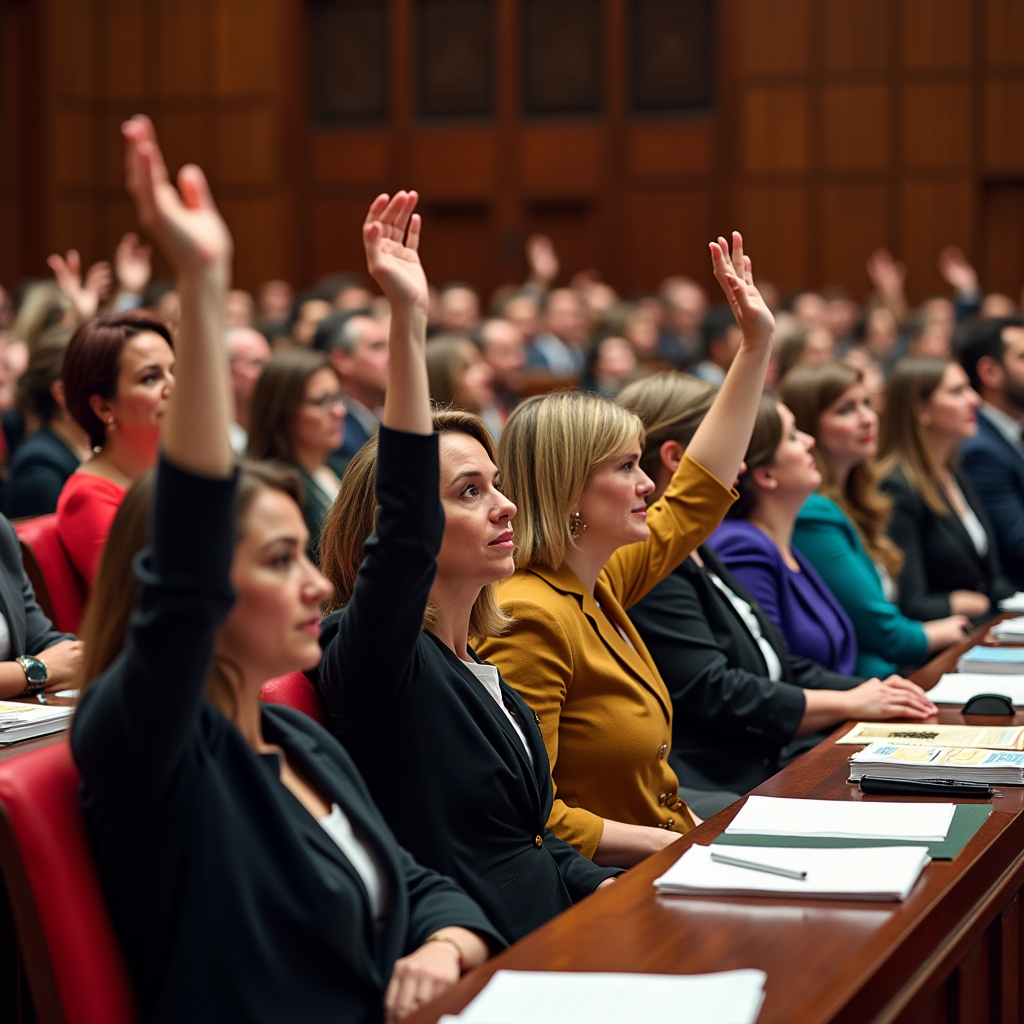
Section 6 of 106th Amendment Act, 2023
Ultimately, the last Section of the Amendment Act specifies that the provisions would not affect any representation in the Lok Sabha, State Legislative Assemblies, or Legislative Assembly of National Capital Territory of Delhi until they are dissolved and newly formed.
This provision acts as a savings provision, which is important to prevent any confusion and avoid operational challenges that could arise due to the immediate implementation of the law on the present bodies and their constituents.
History of representation of women in political bodies in India
Initially, in the first Lok Sabha, which was formed in the year 1952, there were only 2 women MPs, and there was no substantial improvement in the representation of women in the subsequent elections as well. Considering the circumstances, it was concerning to see such a low level of representation of a significant group of citizens (women) in decision-making bodies. In 1975, the Committee for Status of Women showed great concern for the lack of representation of women in policy-making bodies. Contrasting to the concern, the committee was not in favour of creating reservations for women in Legislative Assemblies or the Houses of Parliament but rather sought reservations in the third tier of governance, which is the Panchayat and local self-governing bodies.
During this period, Indira Gandhi was the Prime Minister, and a report titled “Towards Equality” was published, which highlighted the status of women in every field and social institutions. This report generated a huge discourse regarding representation of women and reservation of seats, but the committee members were opposed to the idea of reserving seats for women. The mass opinion was that women sought to enter politics through their own accord and not through reservations aimed towards uplifting them into decision-making bodies.
During the tenure of Rajiv Gandhi in the 1980s, he tried to pass a bill to reserve one-third seats for women in Panchayat and local body elections but stood against the reservation of seats for women in State Assemblies. At a later point, certain states like Karnataka, Maharashtra, and Kerala accepted reserving 30% of seats for women. Many claimed this action as a strategic move by the government to tackle and defeat the opposition, disguising it as an effort to empower women through reservation in political bodies.
In the year 1992, the Parliament passed the 73rd and 74th Constitutional Amendment Act, which aimed at providing adequate representation to women in Panchayati Raj bodies and other urban self-governing bodies. Once such reservations were made, demand regarding the reservation of seats for women in the Parliament and State Legislative Assemblies increased significantly. This led to the discussion regarding the Women’s Reservation Bill during the tenure of Prime Minister Atal Bihari Vajpayee in the year 1996. Considering that the government did not have a majority at the time, the bill couldn’t be passed. Therefore, the discussion regarding reservation of seats for women has lasted for a time frame of 30 years in the Parliament.
After the tenure of the Prime Minister Atal Bihar Vajpayee, on 12th September, 1996, the government led by Prime Minister H.D. Deve Gowda tabled the Women’s Reservation Bill in Parliament and it included provisions for 33% reservation of seats for women in Assembly and Parliament. The Bill was the 81st Constitutional Amendment Bill, which did not pass in Parliament and therefore, it was handed over to a joint special committee led by Geeta Mukherjee. During this time, over 106 women’s organisations sent memorandums to Geeta Mukherjee regarding the matter of women’s representation in decision-making bodies.
Considering the opinions of many women, the committee decided to finalise the bill on 9th December, 1996. The Committee had also received many letters written in the blood of women stating that they would not rest until this right of representation was granted to them. Geeta Mukherjee was also determined at making it happen, but it failed due to the opposition of multiple parties. The primary ground for opposition was that it was not feasible to provide a quota within a quota for these women. The bill did not pass due to a lack of consensus.
Women across the nation were agitated by the failure of this bill and the avoidance strategy used by the Parliament. In 1977, during the budget session, the All India Women’s Association marched with 10,000 women across the country towards the Parliament. The women were lathi charged and were subjected to tear gas and water cannons to curb the protest. Many women were injured and were hospitalised by the actions of the state. The then Prime Minister, I.K. Gujral, had to issue an apology for the incident and about 1.5 lakh signatures were submitted to the Speaker of the Lok Sabha in the form of a petition demanding the passage of the Women’s Reservation Bill. In the year 1997, several women’s organisations sent letters to all national political parties demanding to pass the bill.
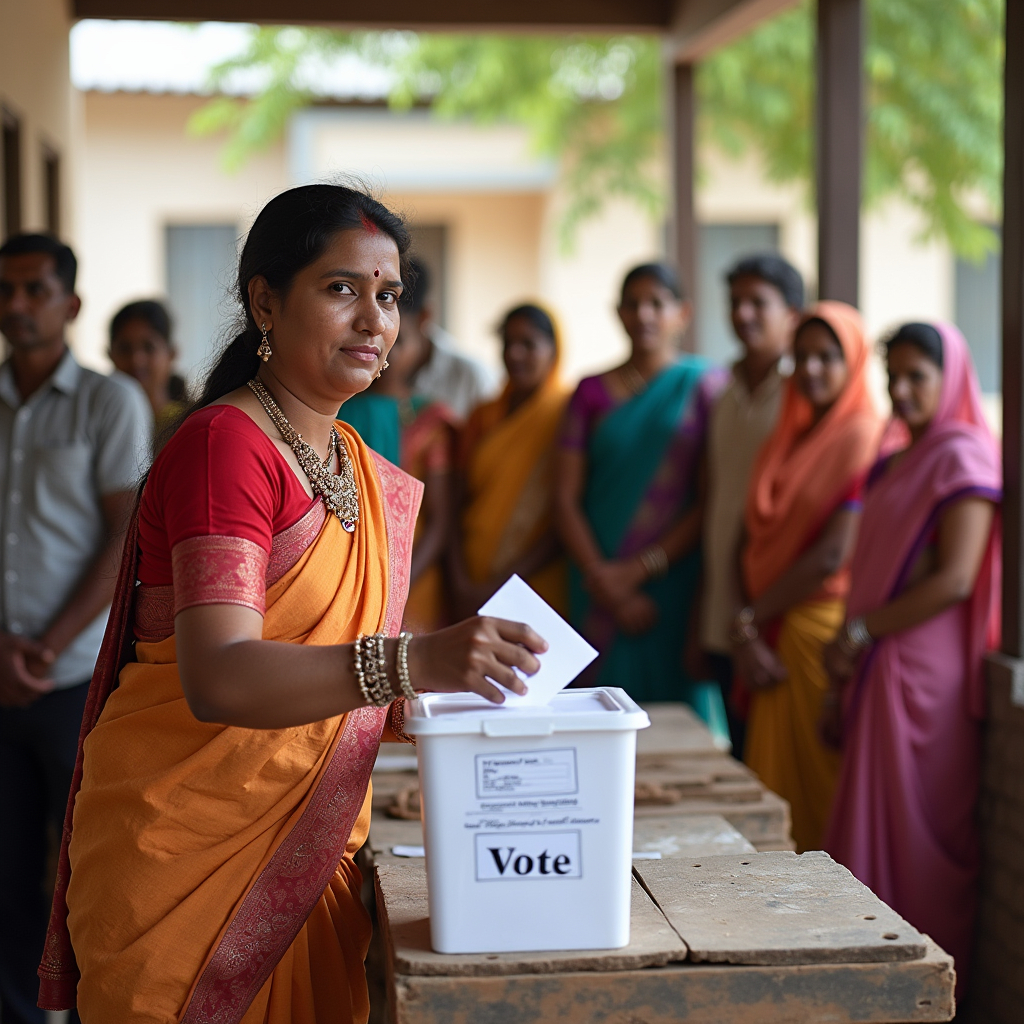
In the year 1998, the Atal Bihari Vajpayee government again tabled the bill in the Parliament, but due to the opposition of certain parties, the bill failed to pass again. In the same year, several women’s organisations protested this move and criticised the government for turning down such an important step towards gender equality. The campaign came to be known as Chetna Yatra, and it took its journey from Delhi via Ernakulam to Chennai and back to Delhi.
In 1998, women representatives of many national parties held conferences in Hyderabad and expressed their support for the cause of reserving seats for women in higher decision-making bodies. After the immense pressure, the Atal Bihari Vajpyee-led NDA government reintroduced the bill in the 12th Lok Sabha, yet the bill did not pass. It was further introduced in 1999, 2002, and 2003 but it did not see the face of success. The lack of consensus was given as an excuse each time the bill failed.
The discourse was reignited during the UPA government’s tenure led by Dr. Manmohan Singh. The bill was reintroduced in the Rajya Sabha in 2008, and three days later, it was referred to a standing committee. The report of the committee was submitted in 2009 and received approval from the Union Cabinet in 2010, and the Women’s Reservation Bill was passed in the Rajya Sabha in 2010. Unfortunately, the bill was never tabled in the Lok Sabha, and then it was dissolved in 2014; therefore, the bill failed to pass once again. The bill has been introduced in Parliament a total of 8 times, but it could never become a law until 2023. In September 2023, the bill was passed in both houses of the Parliament and it came to be known as the Nari Shakti Vandan Act. Out of 456 MPs present in the Lok Sabha, 454 members voted in favour and all 214 MPs of the Rajya Sabha voted in favour of the bill. The bill turned into an Act.
However, a delimitation of seats is to be carried out after the first census is conducted prior to the passage of the Act. The law still has a long road to traverse, and it will most likely be implemented in the Lok Sabha elections of 2029. The bill was passed after multiple amendments were made to it, which included provisions for reservations for Other Backward Classes (OBCs) within the 33 percent quota reserved for women. It was made clear that the 33 percent quota would not be applicable to the Upper House of the Parliament, i.e., the Rajya Sabha.
Recommendations of the Geeta Mukherjee Committee
The Joint Select Committee, which was created to develop a consensus regarding the reservation of seats for women in the Lok Sabha and State Legislative Assemblies, was headed by Geeta Mukherjee. She was a Member of Parliament from the Communist Party of India. The body comprised 20 members from the Lok Sabha and 10 members from the Rajya Sabha. Out of the 30 members, 13 were women, including various women MPs who campaigned for the reservation. The discussions of the committee began on 23rd October 1996 and revolved around two issues: the issue of implementation of reservations in the Rajya Sabha and the issue of reservations for OBCs. Finally, after the conclusion of the discussions, the committee recommended the passage of the bill and suggested that the reservations for OBCs must be done at a later point in time. The suggestions given by the committee included:
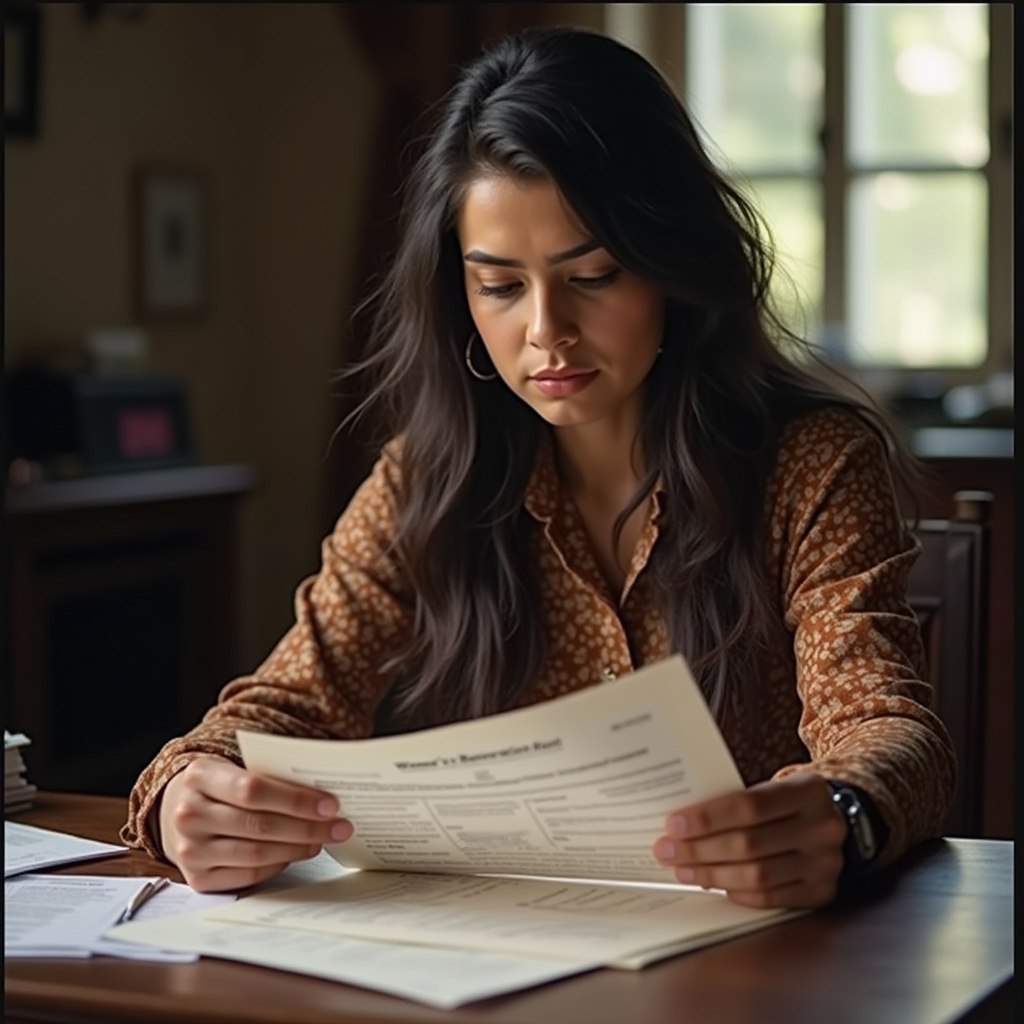
- A parliamentary review of the enactment and its provisions after 15 years from the date of the commencement of the Act to analyse its effectiveness and implementation and to judge whether it should be carried forward. This suggestion sought the reservation of seats for women to be a temporary measure and not of a permanent kind. It is worth noting that 15 years simply implies 3 elections, as the tenure of the Lok Sabha is of five years. Currently, the government aims to implement the Act in 2029.
- The committee recommended replacing the phrase “not less than one-third” with “as nearly as possible, one-third,” as it felt that the former phrasing could lead to ambiguities due to its vague nature and can pave the way for faulty interpretations and executions. They believed that such phrasing could affect the proper implementation of the provisions, and therefore, it was necessary to attain clarity in the provisions themselves to prevent any kind of confusion in the implementation phase.
- It also recommended the extension of reservation of seats for women as envisioned in the Bill to extend to the Rajya Sabha and State Legislative Councils as well. It recommended that the government figure out the modalities and extend the affirmative action to the Upper House of the Parliament as well. In contrast to the suggestion, the current form of the Act does not extend to the Rajya Sabha or State Legislative Councils. It only affects the Lok Sabha and the State Legislative Assemblies. Therefore, this recommendation was not taken into consideration.
- It suggested relevant amendments to the Bill to extend the provisions for reservation to women in those States and Union Territories where the number of seats in Lok Sabha is less than three, as they viewed such a move as unfair to women. They suggested that even if the seats for a particular State or Union Territory are less than 3, at least one seat must be reserved for women so as to allow them to benefit from affirmative action.
- They suggested that the system of rotation should also apply to the members of the Anglo-Indian Communities to ensure that one of the nominated members is a woman.
- The committee also suggested the extension of the provisions for the reservation for women towards the Union Territories of Delhi and Pondicherry, both of which have a Legislative Assembly to ensure representation.
- The committee also suggested omitting the provision to sub-clause 3 of Article 332A, which stated that no reservation for women shall be made in the State Legislative Assembly of a State whether the number of seats allotted to such a state is less than three, as no such state existed in reality. This suggestion was taken into consideration and was implemented in the final form of the Act.
Objections faced by the Women’s Reservation Bill
The Women’s Reservation Bill faced multiple objections, which ranged from laxity on the part of the drafters regarding the correction of obvious errors to significant criticisms regarding the substantial provisions of the law. During the parliamentary discussions and debates regarding the bill, a large number of opponents of the bill used the excuse of technical errors in the draft that could lead to potential ambiguities when the bill gets passed and sent for execution. The primary technical defect pointed out by the opponents was that clause 3 of Article 332A called for the exclusion of states where the seats are less than three. Such a proviso was touted as superfluous, as no state has a Legislative Assembly of less than three members. The exclusion of Union Territories from the purview of the Bill also leads to a significant reduction in its effect since many Union Territories, like Pondicherry, have a Legislative Assembly.
Furthermore, the fixing of the number of seats for women at one-third of the total number of seats to be filled by direct elections to the Lok Sabha and State Legislative Assemblies was not based on any demographic data or any other reasonable nexus. This was simply extracted from the figures of reservation given to women in panchayats and other local self-governing bodies in the third tier of governance. The objection was that when the Constitution itself recognises the basis of reservation to be proportion of population, why weren’t 50% of the seats reserved for women in the Lok Sabha when at least half the population of the nation is women? It is worth noting that the number 33% is anyway higher than the recommended 30% participation threshold set by the United Nations Commission on the Status of Women.
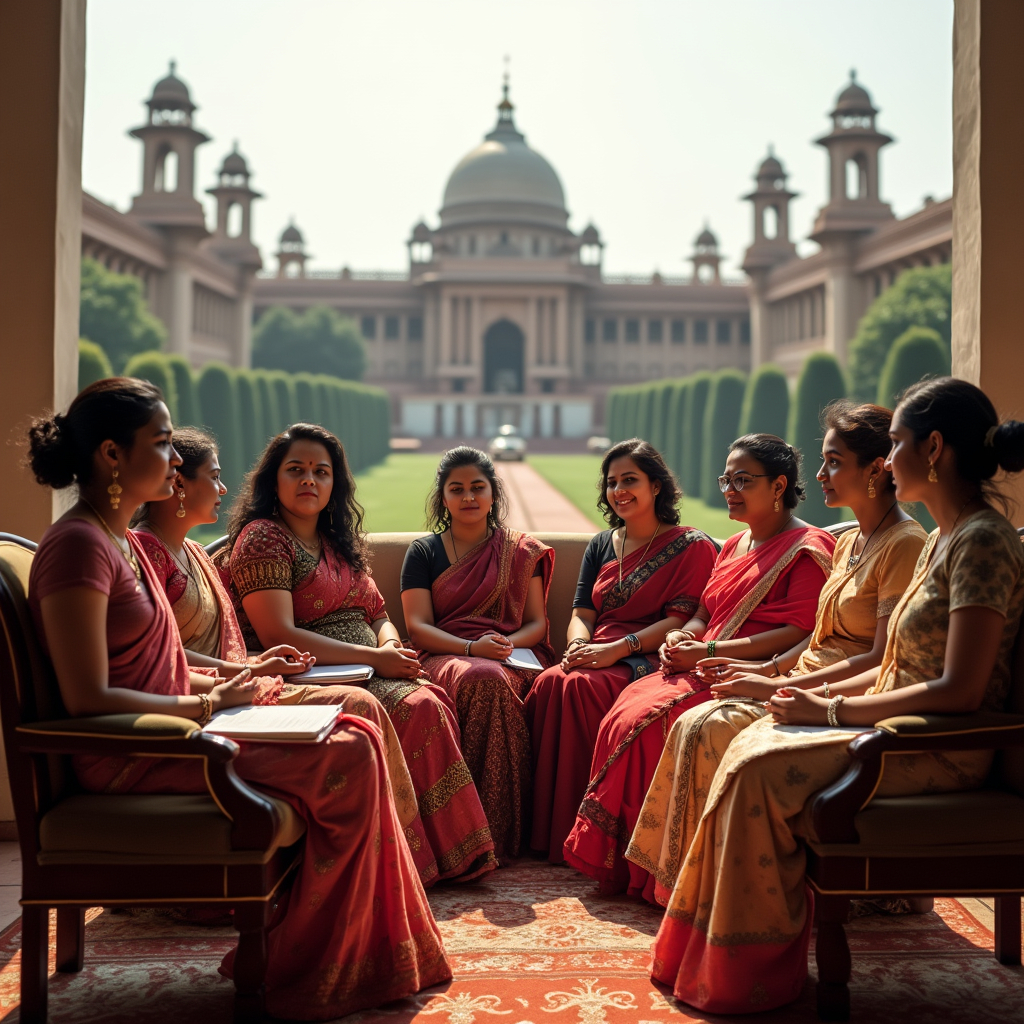
The next set of objections was regarding the “one-out-of-three” formula used for reservation of seats for women. It creates a special set of problems for states like Goa, Sikkim, and other north-eastern states that elect less than 3 members to the Lok Sabha. The only possible solution to this problem could be the reservation of seats for women in one term and de-reserving them for the next two terms. The bill recognised a differential treatment for such States and Union Territories but the final form of the Act has no such mentions.
Many opponents found the extension of reservation provisions only to the directly elected Lok Sabha and State Legislative Assemblies and the exclusion of the Upper House of Parliament and State Legislative Councils to be erroneous. It is worth noting that, in a similar sense, the reservations for Scheduled Castes and Scheduled Tribes have existed for a long period of time and extend only to the Lok Sabha and not to the Rajya Sabha. Even though the Rajya Sabha functions on nominations, no efforts have been made to improve the representation of women in the Upper House. There is a need to have significant legislation in place to protect the representation of women in the Upper House of the Parliament. It is also significant to note that the Rajya Sabha has almost an equal say in every major decision. Therefore, lacking a strong representation in Rajya Sabha, the advantage gained by women in Lok Sabha becomes futile and insignificant.
The next point of objection was that the bill did not mention any renewal plan or timeline. It was compared to the fact that even though the reservations for SC/ST communities were planned for ten years, they were extended through subsequent amendments and have continued beyond fifty years from the commencement of the Constitution. Even though the final form of the Act mentions a timeline of 15 years for women’s reservation, the bill made no such remarks or promises. It was inserted only after the recommendation of the Joint Select Committee.
The next significant criticism was regarding the rotation of the seat system. The rotation system involves selection of seats for reservations through a lottery in every term, where one-third of the constituencies are selected and the de-reservation in the next term and further selections being made from the remaining two-thirds of the constituencies through the lottery was criticised to be impractical and ambiguous. The reservation of one-third of seats from the one-third of seats reserved for women belonging to Scheduled Castes or Scheduled Tribes further complicates the system and makes the implementation difficult in every sense.
These modalities were challenged, and a clear process for the implementation was demanded by the opponents of the bill as this system raised several concerns. The process of seeking reservation within reservation was not viewed amicably by many opponents of the bill. In this kind of a system, the representatives would have no motivation to responsibly manage and nurture their constituencies, as there would always be a possibility of de-reservation in the next term.
These were the major objections faced by the biIl during the discussion phase.
Objections to reservation for women
One of the primary concerns raised against the idea of reservation for women was that it would not transcend beyond the general perspective of women as daughters, mothers and sisters. In a society where men are traditionally seen as the breadwinners and women as the nurturing caregivers, it is tough to properly create a hold for women in the field of politics. Even if the women find access to political and decision-making forums, their opinions in most cases would be controlled by their husbands, fathers or brothers. This creates a ground for dynastic politics to allow women from their families to contest elections for the reserved seats and ultimately get controlled by the male relatives who have had a long standing in the field of politics.
Some opponents also state that reservation for women can pose a threat to national unity as it would consequently manifest divisive tendencies in the field of politics, which is already a very divisive arena. Many argue that sex should not be the sole basis of reservation and that it must be intersected with other social identities, but this argument is unsubstantial as the bill is proposed for both horizontal and vertical reservation. The bill creates a system where caste and sex are intersected to reserve seats for women belonging to Scheduled Caste and Scheduled Tribe communities, and therefore the principle of demarcation is quite valid. It is also worth noting that the constituent assembly promoted the idea of reservation for disadvantaged groups in accordance with democratic ideals and the principles of social justice. Due to a faulty gender power imbalance, women find themselves in a disadvantaged position and therefore, it won’t be wrong to give them affirmative action in the form of reservation.

The next set of objections were that the reservation of seats for women in legislatures will lead to most seats getting occupied by people from an upper caste and upper class background, and it would lead to a stronger impediment for people belonging to scheduled castes and lower class. On the contrary, this argument is valid not just for seats reserved for women but for all seats of Lok Sabha in general. There is a clear impediment for disadvantaged minorities to access political forums. This argument was further substantiated by demanding reservations for OBC women but the bill only viewed women belonging to SC and ST communities for intersectional reservations and paid no heed to OBCs. While constitutionally, reservation for OBCs is seen in fields of education and employment, in the field of politics, only SC and ST reservations are envisaged.
The greatest obstacle that women have while accessing the field of politics is the patriarchal mindset of their own families. In most rural areas and even in urban settings, women are still responsible for housework even if they are employed. They have to undergo a gruesome second shift at home because of the traditional gender roles, which are confined to the ideas of patriarchy. Women, from a very young age, are indoctrinated to believe that they are inferior to men, and this mindset is ingrained in their beliefs and actions. Consequently, very few women break the chains of patriarchal mindsets and enter the field of politics. Closely linked to this argument is the primary argument that men in politics will simply forward their female relations to contest elections and ultimately use them as puppets to exercise their power. This possibility always remains true but in contrast, we also have examples of great female leaders who have contributed substantially to society and nationhood.
The feminist opposition to women’s reservation is that it would lead to a sort of political “ghettoisation,” which is basically a situation where women are pitted against each other and instead of working towards a common cause, they would be put in a situation that makes them rivals. So in essence, it may not take forth the interests of women but rather hamper it by creating conflicts between them. The potential of alliances between women, which could help them foster change, gets substantially weakened by the strong sense of rivalry that politics creates between opponents.
Many argue that till the introduction of reservations, women have been representatives of people. By creating separate constituencies for women, it narrows down their perspective and their representation potential to a large extent to just women. This argument is not valid as it sees the interests of women separate from the interests of society. This mindset does a huge disservice towards the entire idea of an egalitarian society as it creates a division of interests based on gender. By empowering women in the fields of economics, politics, education, and employment, society itself grows and gets empowered. The real progress of a society should be judged by the status of women in it.
Many argued that it has been seen that when a specific group is given a reservation, other groups demand the same too. That phenomenon would lead to quite an unrest and create complicated and divisive situations in the arena of politics. Another concern was that in the past we have seen that once a reservation is granted to a group, it becomes extremely difficult to end the reservation and it continues for an indefinite period. Women have been contesting as equals to men in the field of politics and by providing reservations, they may get viewed as unequals in some situations, which would hamper their perception in the field of politics. This argument holds no ground as the situation of women has not quite improved in the past years. May it be in politics or society in general, women often find themselves in a position of disadvantage and therefore reservations would not lead to inequality but inequality leads to reservation. It is a necessary affirmative action to cure decades of injustice being meted out to women in society.
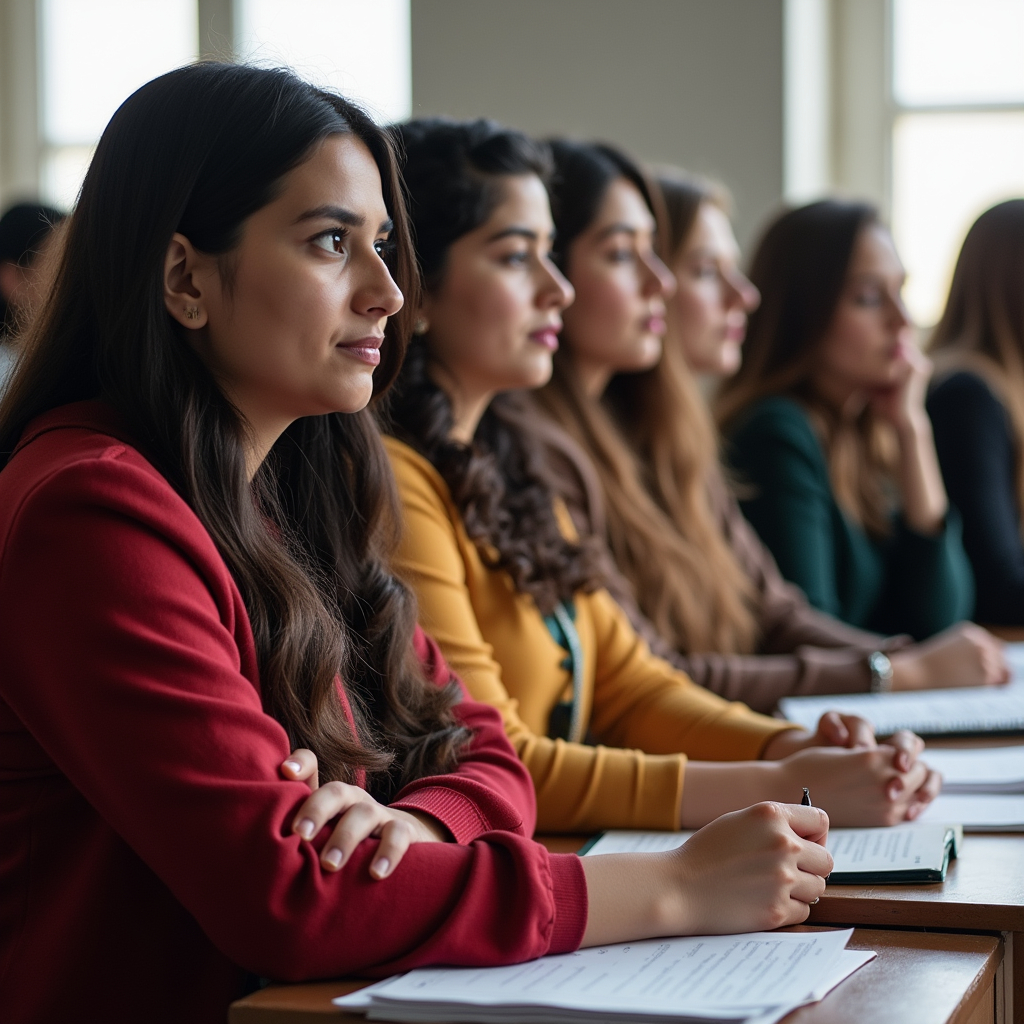
Highlights of the Act
Almost thirty years ago, the Parliament had enacted the 73rd and 74th Constitutional Amendment Acts, and those enactments focused on the establishment of self-governance institutions, and it was made mandatory for these bodies to reserve at least one-third of the seats and the post of chairperson for women. Additionally, reservations were also made of Scheduled Castes and Scheduled Tribes considering their population percentage in those states. These changes resulted in the representation of almost 30 lakh elected representatives, of whom almost 50% were women. The fulfilment of any constitutional reform is based on its expanding and inclusive nature towards diversity in opinion and representation.
Even though the Central Government’s 2009 Constitutional Amendment focused on an increase of 33% seats for women to 50% seats being reserved in local government, many states passed Acts that reserved 50% seats for women in their local self-governing bodies. As a consequence, local self-governing bodies witnessed a combination of both horizontal and vertical representation in their systems. In a similar manner, the Women’s Reservation Act, 2023 is close to its 2009 version, where it follows the system of differential reservation for women, but it doesn’t provide reservation of seats for OBC women and is limited to SC and ST women only.
Reservation for women in the Lower House
The Bill provided for the insertion of Article 330A in the Indian Constitution, which gets its derivation from Article 330. In the said Article, it provides for reservations of seats for the Scheduled Castes and Scheduled Tribes in the Lok Sabha. The Act provides for seats that are reserved for women to be implemented on a rotation basis in various constituencies in the States and Union Territories of India.
Reservation for women in State Legislative Assemblies
The Act also enacts the provision for introduction of Article 332A, which makes it mandatory to reserve seats for women in all the State Legislative Assemblies. Apart from the said reservations, it also calls for the reservation of one-third of the seats reserved for people belonging to Scheduled Castes and Scheduled Tribes for women belonging to Scheduled Caste and Scheduled Tribe communities. One-third of seats that are filled by direct election to the State Legislative Assemblies are also reserved for women. This allows for both vertical and horizontal reservation for women for an equitable gender and caste representation.
Reservation for women in the Legislative Assembly of the National Capital Territory of Delhi
With the introduction of Article 239AA in the Indian Constitution, special status was granted to the Union Territory of Delhi as the National Capital due to its extreme significance in the field of administrative and legislative functions. The Women’s Reservation Act amended Article 239AA(2)(b), and added that the laws made by the Parliament regarding the reservation of women shall also be applicable to the National Capital Territory of Delhi. As regards these provisions, one third of the seats shall be reserved for women from the seats filled by direct election in the Legislative Assembly of Delhi, and one-third of the seats reserved for members of the Scheduled Castes and Scheduled Tribes shall be reserved for women belonging to those communities.
Implementation of reservation
The Act clearly states that the provisions regarding reservation will be effective only after the first census is conducted following the passage of the bill and a delimitation exercise is carried out on the basis of the said census to reserve seats for women. It specifies that the period of such reservation will be for 15 years and will continue till the time that the Parliament decides by the exercise of law. The Bill also specified that the seats reserved for women will be rotated after each delimitation based on the census and such rotation shall be determined by the Parliament.
Reasons for seeking reservation of seats for women
In a patriarchal and heteronormative society with a history of systemic position, women often find themselves more disadvantaged as compared to men in the balance of gender. This imbalance in power dynamics between two genders results in ineffective actions taken by men for women even though they do not personally understand the problems faced by the opposite sex. The gender gap is evident in multiple institutions. May it be education, employment or politics, the gender gap finds a prominent place in all of them. Not just in India, globally many countries reflect a poor representation of women in political forms and decision-making bodies. Especially in the Arab countries, the situation is much worse than the global average.
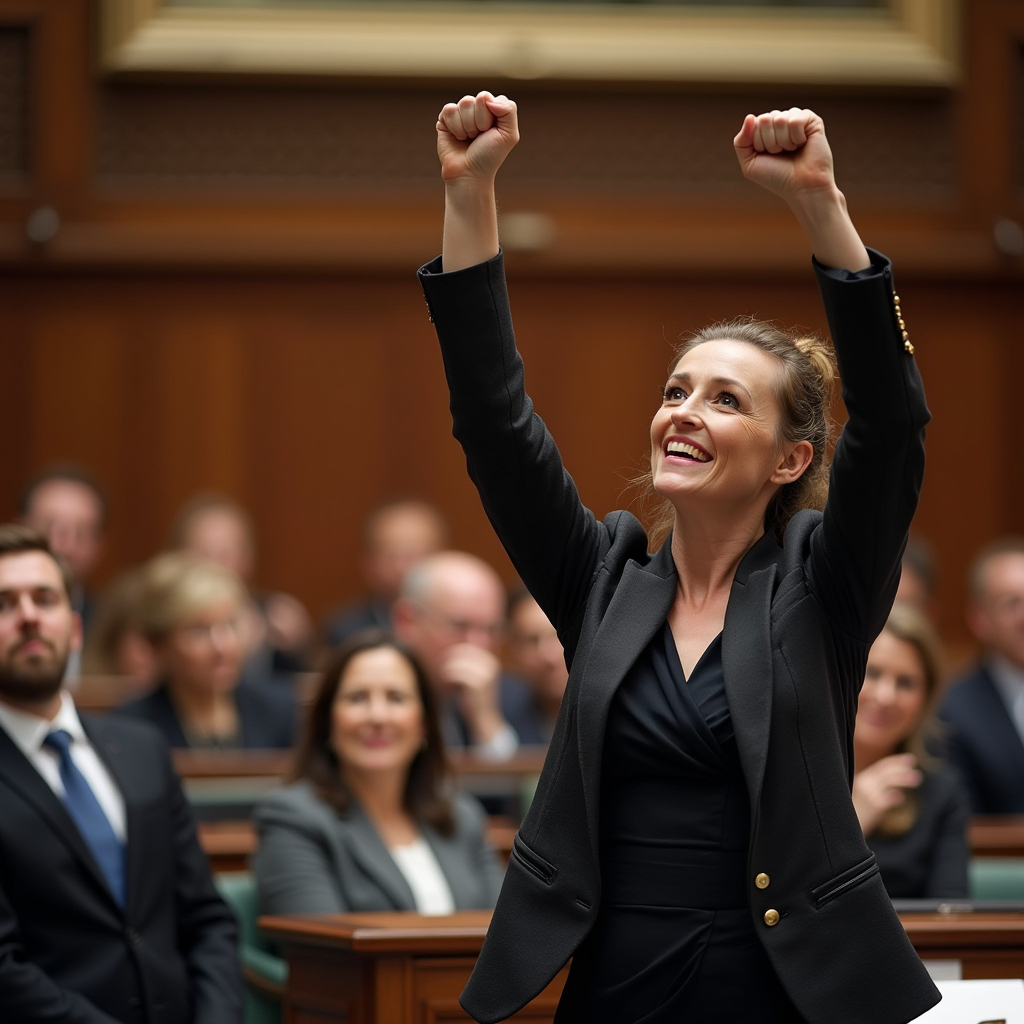
Despite the constitutional proclamation of India to seek social, economic, and political justice as well as equality of status and opportunity for all citizens, women still do not find an inclusive arena in the field of politics and decision-making. Even though situations are slowly changing, it is still a far-fetched idea to achieve equality in representation between both genders. The participation of women and female leadership in a country are significant indicators of a healthy, diverse, and inclusive democracy. While most male Member of Parliaments across the globe make strong remarks in support of women’s empowerment to guarantee votes, their willingness to sacrifice a seat for a woman is filled with hesitation.
The clear lack of nexus between the promises of the political parties and actual ground level execution leads to a sad state of affairs for women. In the context of the Women’s Reservation Act, 2023, it is worth noting that the bill was passed after decades of its introduction. Nearly 7 decades after becoming a functioning democracy, India sought actions towards empowering women by reserving seats for them in decision-making bodies. This delay is significant to reflect upon to understand that the field of politics creates in itself an unequal playing field for women. Therefore, it is necessary to have important safeguards and reservations in place in the form of affirmative action to ensure that women have better access to such important positions.
Benefits of passing the bill
There are multiple benefits of the Women’s Reservation Act towards empowering women and making fields of politics accessible to them. Some of them are:
Enhancing governance measures
Some proponents of women’s reservation argue that due to the innate ability of women to be more concerned about management and accountability, they can provide greater attention to important issues like health, education, social welfare, environmental conservation, social justice, and reforms for a positive administration. They can ensure the creation of bodies with greater integrity and accountability and foster collaborative efforts with others for a holistic change.
Local representation
As per the consequences of the 73rd and 74th Constitutional Amendments reserving seats for women in local self-governing bodies, it has been witnessed that the gender quotas increased the representation of women and their participation in the field of politics. Therefore, local constituencies are ready to have women’s representation in higher bodies of political nature to allow more consequential changes and the betterment of civic systems. By disseminating the benefits of reservation in all tiers of governance, women can truly create an inclusive political system that allows for positive changes and reforms in society.
Labour force participation
As per observations made through the consequences of reserving seats for women in panchayats and local self-governing bodies, it has been clear that women in decision-making bodies challenged gender stereotypes and paved the way for inclusion of women in economic spaces. The labour force participation of women significantly increased with the advent of reservation of women in the third tier of governance. Therefore, it is expected that with the representation of women in legislatures, there will be a positive change by seeing an increase of women in economic spaces where they contribute to nation-building and development of the national economy thoroughly. These women MPs will serve as a role model for young women to do away from the confines of a patriarchal mindset and live up to their fullest potential.
Creating safe spaces for women
Most of our social institutions are ingrained with vices that affect women. In marriage, women are met with domestic violence, cruelty, dowry deaths, and so on and so forth. In the institution of family, women have a burden of work and responsibilities that is unequal and are treated inferior to their male counterparts. In education, the literacy rate shows inequality at the grassroots level. In employment, they have to face sexual harassment at the workplace and a gender wage gap. With the inclusion of women in the decision-making bodies, they will represent these concerns in a better manner and design fruitful solutions to overcome these challenges in a more pragmatic and practical way, which will prevent any sort of social injustice in any social arena. It shall also have a beneficial effect on public services like sanitation and healthcare, where women will not only be beneficiaries of the schemes but the frontrunners of change in their communities and localities.
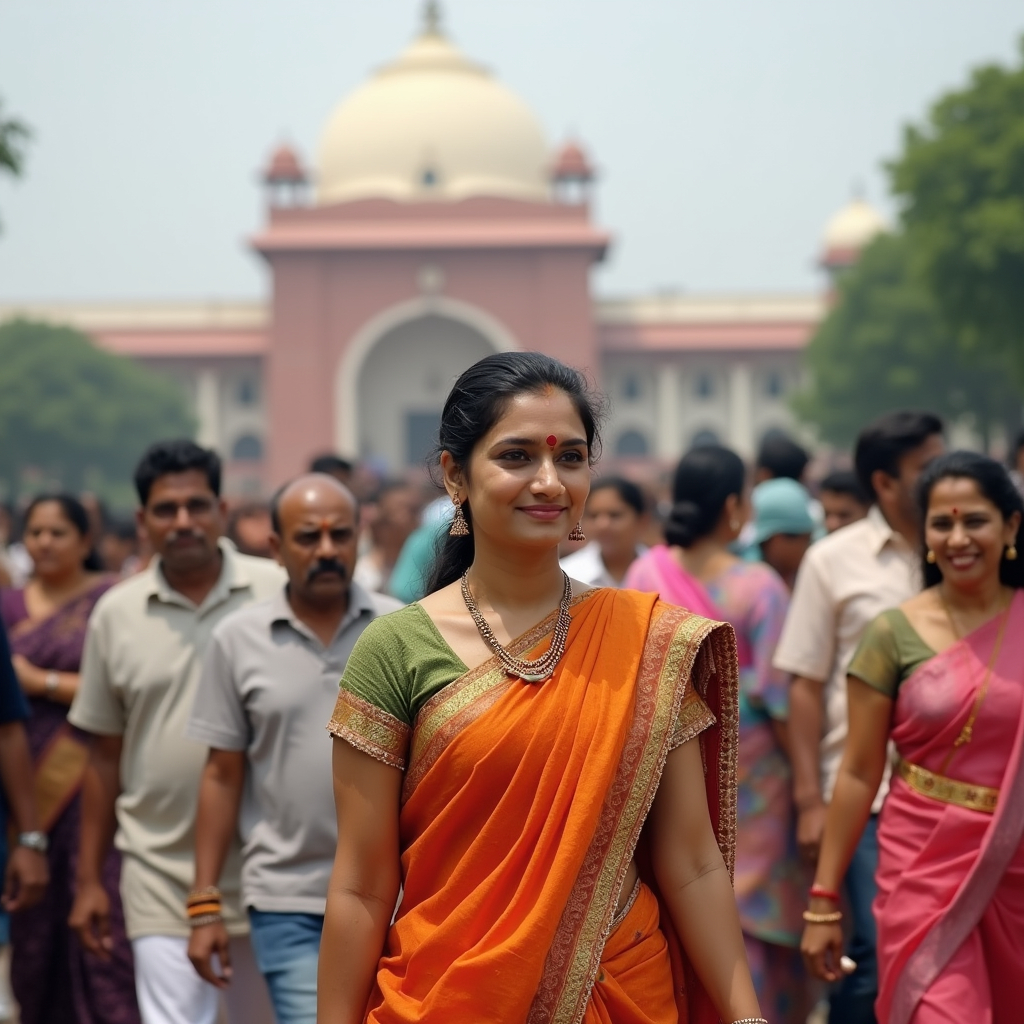
Conclusion
The impact of the reservation for women is a multidimensional one. It will only be assessed once it is implemented. One can simply make assumptions now regarding the effects of the 106th Constitutional Amendment on the position of women, but one can never be sure of the positive effects as it largely depends on implementation, action and various stakeholders who influence the process. Overall, the move seems to be promising for substantially increasing the status of women in society and breaking traditional narrative regarding gender roles and socialisation. The delimitation exercise planned by the government must be carried out with finesse so as to implement the provisions of the law effectively without any hindrance. By including more women in decision-making bodies, the nation is not only empowering women but society at large. Intersectional empowerment and opportunity creation have always fostered beneficial changes in the world.
Hopefully India will be able to witness a similar transformation in the field of politics through this aspirational move towards the betterment of women. Even though there exist controversies and concerns regarding linking women’s reservation with a politically charged delimitation process, the ultimate result is yet to be seen. The concerns regarding representation of women in Rajya Sabha and State Legislative Councils must also be duly addressed to create an ideal situation of representation in the decision-making bodies. The government must invest in raising awareness and providing education regarding the field of politics to increase the participation of women in contesting elections and also exercising their voting rights. Through such measures, the government can ensure a collective concerted and collaborative effort towards nation building without limiting the role of women to the confines of their home when they wish to step out of it and create tangible change in the world.
Frequently Asked Questions (FAQ)
What is the 106th Constitutional Amendment Act otherwise known as?
The 106th Constitutional Amendment Act is a result of the 128th Constitutional Amendment Bill, otherwise known as the Women’s Reservation Act, 2023.
Which are the bodies on which the provisions of the law shall be made applicable?
The provisions of the Women’s Reservation Act shall be applicable to the Lower House of the Parliament, i.e., the Lok Sabha, the State Legislative Assemblies and the Legislative Assembly of the National Capital Territory of Delhi.
Which bodies are excluded from the ambit of the Act?
The Upper House of the Parliament, i.e., the Rajya Sabha and the State Legislative Councils of states with a bicameral legislature are excluded from the ambit of the provisions of the Women’s Reservation Act.
What is the extent of reservation envisaged by the Act?
The Act envisages a reservation of one-third of the seat, reserved for scheduled caste and scheduled tribe members for women belonging to scheduled castes and scheduled tribes. It also envisages the reservation of one-third of the seats, which are filled through direct election to the bodies.
When will the Act be implemented?
The Act is supposed to be implemented by 2029 after the first census is conducted post the passing of the Act and a delimitation exercise is carried out by the government.
References
- https://www.jchr.org/index.php/JCHR/article/view/3357/2287
- https://prsindia.org/files/bills_acts/bills_parliament/2023/Issues_to_Consider_Womens_Reservation_Bill_2023.pdf
- https://repository.nls.ac.in/nlsir/vol20/iss1/1/
Students of Lawsikho courses regularly produce writing assignments and work on practical exercises as a part of their coursework and develop themselves in real-life practical skills.
LawSikho has created a telegram group for exchanging legal knowledge, referrals, and various opportunities. You can click on this link and join:
Follow us on Instagram and subscribe to our YouTube channel for more amazing legal content.
 Serato DJ Crack 2025Serato DJ PRO Crack
Serato DJ Crack 2025Serato DJ PRO Crack


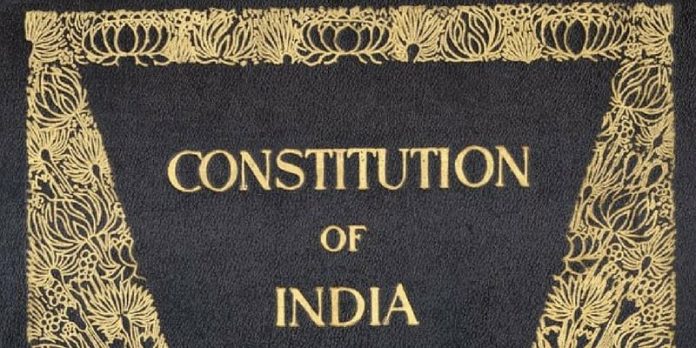







 Allow notifications
Allow notifications



